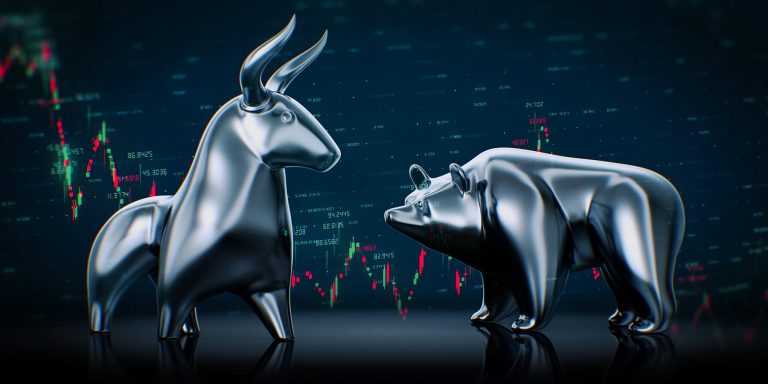If you have any interest in trading financial markets, you have definitely heard about “bulls” and “bears”. In the financial world, these terms are used by investors in order to describe market conditions and its participants. The words help to indicate whether the market is rising or falling — important information for the investors’ portfolios. So, what are bull and bear markets and how they may possibly affect your investments?
Bullish vs. Bearish market — know the difference
The main idea and the origin of the terms “bullish” and “bearish” can be found in the nature in which these animals attack. Bulls try to pierce their enemy with their long horns, moving their head in upward motions. Bears, on the other hand, attack in a downward motion, striking their enemy with their big paws.
As can be concluded from this, a bull’s market is turned upwards, with the assets growing in value and economic conditions being generally favorable. A bear market, on the contrary, is one in which the economy is failing and most stocks are losing value.
Since investor sentiment has a strong influence on financial markets, the term also refers to investors’ perceptions of the market and the resulting economic trends. Generally speaking, those that invest in growing markets are “bulls”, and those that choose falling markets are called “bears”.
Bull market characteristics
A bull market is characterized by a steady rise in prices. In the stock market, an increase in a company’s stock price is referred to as bullish. In such conditions, investors often expect that growth will continue over the long term. Generally in such a scenario the economy is strong and employment is at a high level, too.
When a market is bullish, the demand for the asset is stronger than the supply, which makes its price grow. Basically, everyone wants to buy the asset, expecting it to increase in value. Those that were able to buy the asset at a lower price may benefit from selling it at a much higher price later, when the asset reaches its peak value.
Bear market characteristics
In contrast to the dynamic of a bullish market, a bear market is a falling one, with prices constantly decreasing. Generally, a market is considered a true bear market only when it has fallen more than 20% from its most recent peak.
When a bear market gains momentum, investors tend to believe that the downward trend will continue and this belief sustains the downward spiral. Traders and investors want to get rid of the security and the supply greatly exceeds demand. Many start panic selling, which only adds fuel to the trend. In a bear’s market, the economy slows down and the unemployment rate rises as companies begin to lay off employees.
How to know which market is prevailing?
When it comes to comparing the two types of markets, there is no better one for the trader. Both bull and bear markets have opportunities to offer as well as disadvantages, but traders need to have the necessary knowledge and skills to use them. Understanding the prevailing trend is crucial for every trader, because this will determine the tactics they should choose. Picking an appropriate and timely trading method based on the current market conditions might be the key to better outcomes.
In order to determine whether the market is in a bullish or a bearish trend, one may apply analysis tools — indicators and graphical tools. For example, such trend indicators as the Moving Average, RSI or Stochastic may be of help. They have the potential of evaluating the price movements and helping traders to understand the underlying trend better, and detect possible trend reversals.
Of course, with this said, traders need to understand that there is no tool that would give 100% correct indications every time and guarantee success. Experienced traders like to combine technical analysis with elements of fundamental analysis to form as objective of an opinion as possible.

